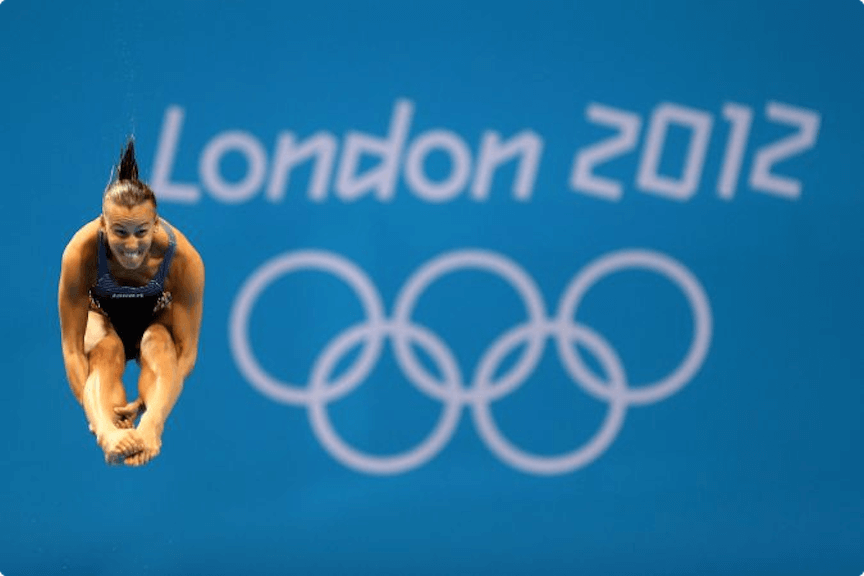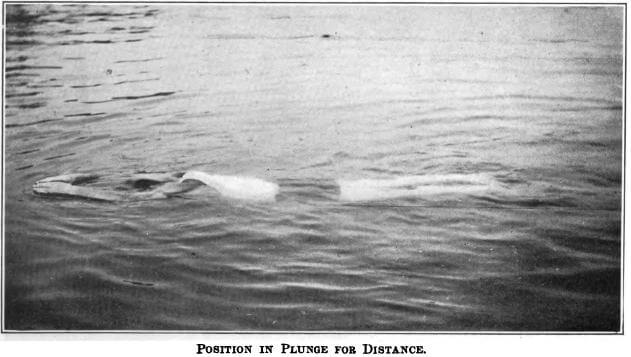The Fascinating History of Olympic Diving

By Erin Keaveny, Swimming World College Intern
The history of Olympic diving reflects how far the sport has come. Over the last century diving has evolved from strange events that are definitely unconventional, to one of the most anticipated parts of the Olympic games.
Diving made its debut in the 1904 Saint Louis Olympics, where George Sheldon of the USA took home the gold on men’s 10-meter platform. 1904 was also the one and only year that the plunge for distance diving event took place. If you’re wondering what plunge for distance is, it’s just as glorious as it sounds.
Picture this, an athlete dives in off the side of the pool, and then remains completely motionless until they stop moving forward. Whoever goes the farthest wins, and you bet an American won that year. I’m really questioning why it got removed from the program of events, it seems absolutely thrilling. Regardless, William Dickney will forever hold a place in history as the greatest Olympic plunge for distance champion ever.
For your viewing pleasure:

Photo Courtesy: Louis de B. Handley
It is also of note that according to USA Diving, during the 1904 Olympics a double somersault was considered dangerous. Divers only had 14 platform and 20 springboard dives to choose from for competition. Today there are approximately 60 one meter dives, 70 three meter dives, and 85 on platform.
In the 1920 Antwerp, Belgium Olympics, women first competed on three meter, and American ladies swept the podium! Never mind that there were only four women competing, and they were all from the United States.
British Swimming talks about how diving meets were far from orderly back in the day. Dives were divided into two categories– plain and fancy. Athletes could choose whether to run off the boards, or start from standing, if they wanted to take off of one foot or two, and whether they would use their hands in their entry or not. It wasn’t until the 1924 Olympics in Paris that things started to get simplified. By Amsterdam 1928, athlete’s lists were made up of voluntary and optional dives.
The Olympic diving event remained relatively unchanged from 1924 until 2000 when synchronized diving found its place on the global stage.
Rome 1960 was the first Olympics to use all Duraflex aluminum springboards. The first Duraflex was made out of an aircraft wing panel by Raymond Rude. There have been vast improvements in technology applied to the boards, and the Duraflex board remains the diving board of choice for every Olympics and international competition since.
The United States has historically dominated diving. The American men have won 16 out of the 26 Olympic golds on springboard, and 12 out of 26 on platform. The women have taken home 12 of 22 springboard golds and 8 of 23 on platform. After China’s first appearance since 1952 in the 1984 Los Angeles Olympics, they have done extremely well in diving on the men’s and women’s side.
Americans Pat McCormick and Greg Louganis are the only people to have brought home the gold on both platform and springboard from two consecutive Olympics. McCormick in 1952 and 1956, followed by Louganis in 1984 and 1988. With a total of four gold medals each, they also tie for most Olympic diving golds held by a single person.
It’s hard to believe that in the 1980s a man could make the American Olympic team with a 103b in his list. The degree of difficulty that Olympic lists have today compared to when the event was first introduced to the Olympics, or even 20 years ago, is insane. It seems like divers are pushing the limits of what is humanly possible, but then again, they said that 50 years ago too.
Tune into the upcoming Rio Olympics, starting August 5, to see this batch of divers fight to forge their own spot in history.




The University of Tennessee’s Diving Coach, Dave Parrington’s grandfather, Frank Parrington of Great Britain, was inducted into the International Swimming Hall of Fame in 1986 as a PIONEER PLUNGER!
Also of historical significance are the accomplishments of Dr. Sammy Lee, the first Asian American to win Gold at the Olympics. Sammy won the 3 meter Bronze and Gold on the Platform in the 1948 Games in London. He repeated his Gold medal performance on the Platform four years later in Helsinki. Dr. Lee went on to become a dentist and also was an early coach of Hall of Fame Diver
Greg Louganis. Sammy himself was inducted into ISHOF in 1968.
Chuck is correct. Sammy Lee was amazing diver, one of the best ever. And still is. Just one small clarification. Dr. Sammy Lee is an MD, an, ENT, specializing in Ear, nose and throat, not a dentist.
super informative